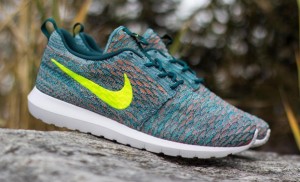According to Natural Marketing Institute’s shades of green, I would most probably fall under the “conventionals” category describing myself as someone who is aware and for the environment but does not always uphold sustainability because of laziness and costs, which play into my lifestyle choices and purchasing power. Personally speaking, with this mentality I am only most likely to purchase sustainable products if the masses start adopting and purchasing these new green products as trendsetters. In parallel but on the supply side of the story, the same chain effect is happening with companies in the consumer goods and services market.
Companies are responding to consumers’ behaviour shift like a trend. Conglomerates like Levi Strauss, Nike and J&J amongst many of the big players out there are adapting to the new market of green products and adopting this new emphasis on green products. Levi’s claims that its jeans are made from just about eight recycled plastic bottles and Nike claims that its knitted sneakers cut manufacturing waste by 88 percent. As evidenced by a survey conducted by brand consultancy BBMG in 2013, “more than a third of global consumers, including 40 percent of millennials, view style, status and environmentalism as intertwined”. To these consumers, sustainability has changed from being “the right thing to do” to being “the cool thing to do”, shifting the emphasis of valuing the need to do it to the want to do it. Based on this new change in perspective, for companies it is really not about offering a niche green product but rather offering a green band through building sustainability into the bloodline of the company in every single process no matter how big or small.
Companies are slowly but gradually shifting their segmentation, targeting and positioning from offering products that fall under the “feel-good factor/transient” quadrant that encompasses altruism and an external locus of control to the “value parity/green differentiation” quadrant that encompasses economic motives and an internal locus of control. Offering green products to the market is not enough to gain a competitive edge over competitors anymore, the new era of consumer preferences are now demanding companies as a whole to become green and this in fact is the new way to gain a competitive edge over competitors.
http://www.adweek.com/news/advertising-branding/green-new-black-levi-s-nike-among-marketers-pushing-sustainability-153318



This is a very interesting but slow shift. As we have discussed in class the “green is mainstream” has really been incorporated in already successful brands, such as Nike or Levis as you mention above. However, I feel concern for not so profitable businesses, not integrating sustainability on their products, soon.
I agree that at this period in time, the most important changes has to be lead by the business giants, but I perceive this shift to be still really slow.
As I learn more about sustainability and discover the participants in the movement towards a greener world, I am always surprised at the number of entities that are supporting this cause and the effort they put into it. This makes me feel very optimistic and happy – I think that the planet will actually be saved! However, in order to make our planet greener, much more efforts need to be committed and this is where the individual efforts come in. It is great that the corporates are trying to carry out their daily activities in a more responsible manner but are we, as individuals, doing the same? We can’t expect the businesses to save the planet by just making their activities sustainable. We also need to be responsible when purchasing and disposing goods.
As I learn more about sustainability and discover the participants in the movement towards a greener world, I am always surprised at the number of entities that are supporting this cause and the effort they put into it. This makes me feel very optimistic and happy – I think that the planet will actually be saved! However, in order to make our planet greener, much more efforts need to be committed and this is where the individual efforts come in. It is great that the corporations are trying to carry out their daily activities in a more responsible manner but are we, as individuals, doing the same? We can’t expect the businesses to save the planet by just making their activities sustainable. We also need to be responsible when purchasing and disposing goods.
I totally agree that a transforming positioning strategy towards more green and sustainable can lead to the shift of buyer behavior. The examples you gave here are Levi’s and Nike, and I think this tendency would be more obvious in luxury fashion brands.
Shoppers and customers of high-end fashion brands are more long-lasting and loyal to the particular brand, compared to a higher turnover and unstable relationship between brands and consumers in fast fashion. Traditional investors for luxury fashion brands focus more on premium quality and customer service, if traditional investors shift to green investors who care both high-end and sustainable development, these long-lasting high-end customers may more sensitive to this change in brand’s positioning strategy which they may concentrate more on sustainability when making their purchase decision along with other consumer behavior.
It is very interesting article! Thank you for sharing a valuable information. I hope keep posting.